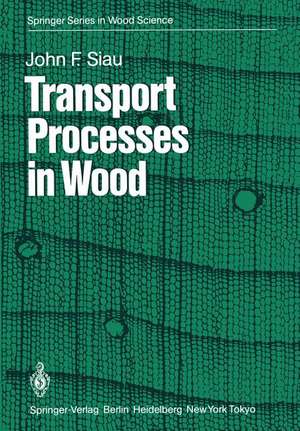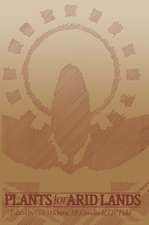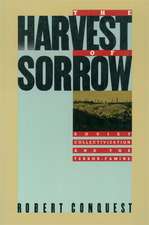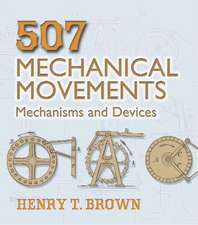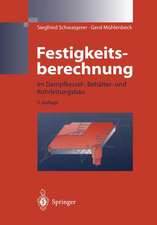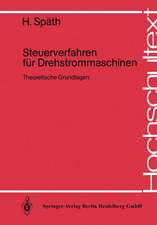Transport Processes in Wood: Springer Series in Wood Science, cartea 2
Autor J. F. Siauen Limba Engleză Paperback – 27 dec 2011
Din seria Springer Series in Wood Science
- 18%
 Preț: 1543.84 lei
Preț: 1543.84 lei - 23%
 Preț: 2062.71 lei
Preț: 2062.71 lei - 18%
 Preț: 1824.32 lei
Preț: 1824.32 lei - 18%
 Preț: 2093.60 lei
Preț: 2093.60 lei - 24%
 Preț: 817.70 lei
Preț: 817.70 lei - 18%
 Preț: 1225.16 lei
Preț: 1225.16 lei - 18%
 Preț: 3288.92 lei
Preț: 3288.92 lei - 18%
 Preț: 948.29 lei
Preț: 948.29 lei - 18%
 Preț: 1222.31 lei
Preț: 1222.31 lei - 18%
 Preț: 946.87 lei
Preț: 946.87 lei - 15%
 Preț: 643.34 lei
Preț: 643.34 lei - 18%
 Preț: 1122.87 lei
Preț: 1122.87 lei - 18%
 Preț: 1020.30 lei
Preț: 1020.30 lei - 24%
 Preț: 836.40 lei
Preț: 836.40 lei - 20%
 Preț: 569.47 lei
Preț: 569.47 lei - 15%
 Preț: 638.89 lei
Preț: 638.89 lei - 15%
 Preț: 636.30 lei
Preț: 636.30 lei - 15%
 Preț: 635.31 lei
Preț: 635.31 lei - 18%
 Preț: 878.05 lei
Preț: 878.05 lei - 15%
 Preț: 646.43 lei
Preț: 646.43 lei - 18%
 Preț: 1004.67 lei
Preț: 1004.67 lei - 18%
 Preț: 894.03 lei
Preț: 894.03 lei - 15%
 Preț: 658.70 lei
Preț: 658.70 lei - 15%
 Preț: 641.53 lei
Preț: 641.53 lei - 18%
 Preț: 950.84 lei
Preț: 950.84 lei - 18%
 Preț: 783.35 lei
Preț: 783.35 lei - 15%
 Preț: 645.79 lei
Preț: 645.79 lei - 24%
 Preț: 880.78 lei
Preț: 880.78 lei - 18%
 Preț: 780.82 lei
Preț: 780.82 lei - 18%
 Preț: 891.65 lei
Preț: 891.65 lei
Preț: 388.13 lei
Nou
Puncte Express: 582
Preț estimativ în valută:
74.27€ • 77.54$ • 61.47£
74.27€ • 77.54$ • 61.47£
Carte tipărită la comandă
Livrare economică 05-19 aprilie
Preluare comenzi: 021 569.72.76
Specificații
ISBN-13: 9783642692154
ISBN-10: 364269215X
Pagini: 260
Ilustrații: X, 248 p.
Dimensiuni: 170 x 244 x 14 mm
Greutate: 0.42 kg
Ediția:Softcover reprint of the original 1st ed. 1984
Editura: Springer Berlin, Heidelberg
Colecția Springer
Seria Springer Series in Wood Science
Locul publicării:Berlin, Heidelberg, Germany
ISBN-10: 364269215X
Pagini: 260
Ilustrații: X, 248 p.
Dimensiuni: 170 x 244 x 14 mm
Greutate: 0.42 kg
Ediția:Softcover reprint of the original 1st ed. 1984
Editura: Springer Berlin, Heidelberg
Colecția Springer
Seria Springer Series in Wood Science
Locul publicării:Berlin, Heidelberg, Germany
Public țintă
ResearchCuprins
1 Basic Wood-Moisture Relationships.- 1.1 Introduction.- 1.2 Saturated Vapor Pressure.- 1.3 Relative Humidity.- 1.4 Equilibrium Moisture Content and the Sorption Isotherm.- 1.5 The Effect of Changes in Pressure and Temperature on Relative Humidity.- 1.6 Specific Gravity and Density.- 1.7 Specific Gravity of the Cell Wall and Porosity of Wood.- 1.8 Swelling and Shrinkage of the Cell Wall.- 1.9 Swelling and Shrinkage of Wood.- 2 Wood Structure and Chemical Composition.- 2.1 Introduction.- 2.2 The Cell Wall.- 2.3 Structure of Softwoods.- 2.4 Types of Pit Pairs.- 2.5 Softwood Pitting.- 2.6 Microscopic Studies of Flow in Softwoods.- 2.7 Structure of Hardwoods.- 2.8 Hardwood Pitting.- 2.9 Microscopic Studies of Flow in Hardwoods.- 2.10 Chemical Composition of Normal Wood.- 2.11 Chemical Composition of Reaction Wood.- 2.12 Topochemistry of Wood.- 3 Permeability.- 3.1 Introduction.- 3.2 Darcy’s Law.- 3.3 Kinds of Flow.- 3.4 Specific Permeability.- 3.5 Poiseuille’s Law of Viscous Flow.- 3.6 Turbulent Flow.- 3.7 Nonlinear Flow Due to Kinetic-Energy Losses at the Entrance of a Short Capillary.- 3.8 Knudsen Diffusion or Slip Flow.- 3.9 Corrections for Short Capillaries.- 3.10 Permeability Models Applicable to Wood.- 3.11 Measurement of Liquid Permeability.- 3.12 Measurement of Gas Permeability.- 3.13 The Effect of Drying on Wood Permeability.- 3.14 Treatments to Increase Permeability.- 3.15 The Effect of Moisture Content on Permeability.- 3.16 The Influence of Specimen Length on Permeability.- 3.17 Permeability of the Cell Wall.- 3.18 Zones of Widely Differing Permeabilities in Wood.- 3.19 General Permeability Variation with Species.- 4 Capillary and Water Potential.- 4.1 Surface Tension.- 4.2 Capillary Tension and Pressure.- 4.3 Mercury Porosimetry.- 4.4 Influence of CapillaryForces on the Pressure Impregnation of Woods with Liquids.- 4.5 Collapse in Wood.- 4.6 Pit Aspiration.- 4.7 The Relationship Between Water Potential and Moisture Movement.- 4.8 Notes on Water Potential. Equilibrium Moisture Content, and Fiber Saturation Point of Wood.- 5 Thermal Conductivity.- 5.1 Fourier’s Law.- 5.2 Empirical Equations for Thermal Conductivity.- 5.3 Conductivity Model.- 5.4 Resistance and Resistivity; Conductance and Conductivity.- 5.5 Derivation of Theoretical Transverse Conductivity Equation.- 5.6 Derivation of Theoretical Longitudinal Conductivity Equation.- 5.7 R and U Values; Convection and Radiation.- 5.8 Application to Electrical Resistivity Calculations.- 5.9 Application to Dielectric Constant Calculations.- 6 Steady-State Moisture Movement.- 6.1 Fick’s First Law Under Isothermal Conditions.- 6.2 Bound-Water Diffusion Coefficient of Cell-Wall Substance.- 6.3 The Combined Effect of Moisture Content and Temperature on the Diffusion Coefficient of Cell-Wall Substance.- 6.4 Water-Vapor Diffusion Coefficient of Air in the Lumens.- 6.5 The Transverse Moisture Diffusion Model.- 6.6 The Importance of Pit Pairs in Water-Vapor Diffusion.- 6.7 Longitudinal Moisture Diffusion Model.- 6.8 Nonisothermal Moisture Movement.- 6.9 Measurement of Diffusion Coefficients by Steady-State Method.- 7 Unsteady-State Transport.- 7.1 Derivation of Unsteady-State Equations for Heat and Moisture Flow.- 7.2 Derivation of Unsteady-State Equations for Gaseous Flow in Parallel-Sided Bodies.- 7.3 Graphical and Analytical Solutions of Diffusion-Differential Equations with Constant Coefficients.- 7.4 Relative Values of Diffusion Coefficients.- 7.5 Retention.- 7.6 Unsteady-State Transport of Liquids.- 7.7 Unsteady-State Transport of Moisture Under Noniso-thermal Conditions.-7.8 Heat Transfer Through Massive Walls.- References.- Symbols and Abbreviations.
